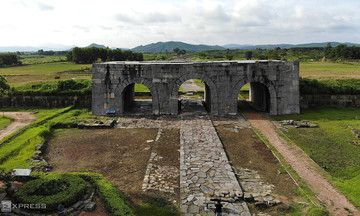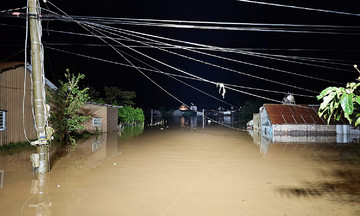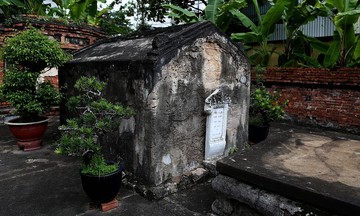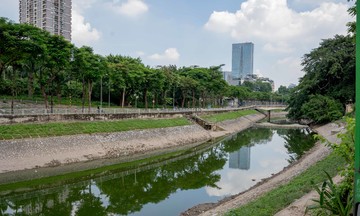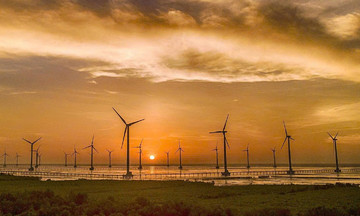This information was presented at a conference held on 5/9 by the Con Dao National Park Management Board, which announced the results of a study on the potential for greenhouse gas emission reductions from forests and sea, and the feasibility of establishing a carbon credit trading model.
Con Dao Special Administrative-Economic Unit, part of TP HCM, consists of 16 islands covering nearly 76 square km, with Con Son being the largest at about 57 square km. Due to its unique geographical location and diverse natural conditions, Con Dao boasts a rich forest and marine ecosystem, representative of tropical island forests, holding great ecological, scientific, and sustainable development value.
 |
A forest in Con Dao. Photo: Thu Huyen |
A forest in Con Dao. Photo: Thu Huyen
According to a 2025 survey, Con Dao has 6,462 hectares of forest and forestry land. Natural forests account for almost 93%, planted forests 0.46%, and barren land and shrubs about 6.7%. The average timber volume reaches 121 cubic meters per hectare in natural forests, 253 cubic meters per hectare in planted forests, and 113 cubic meters per hectare in mangrove forests. The total timber volume for the entire area exceeds 775,000 cubic meters, largely within natural forests.
The total forest carbon stock in Con Dao is estimated at over 428,000 tons, with natural forests accounting for over 99%, the rest being planted forests and non-forested land. The marine ecosystem, with over 423 hectares of seagrass beds, also contributes about 15 tons of carbon, mainly in Con Son Bay.
Consultants stated the total potential for greenhouse gas emission reductions from Con Dao's forests and sea reaches 427,000 tons of carbon. Forests account for nearly all of this, with the sea contributing 0.08%.
Experts believe Con Dao has the potential to develop a diverse carbon credit portfolio from its forests and sea. This would increase its commercial value and competitiveness in both domestic and international markets. The study's findings align with the 2020 Law on Environmental Protection, the domestic carbon market, and international commitments like REDD+ and the Paris Agreement.
To realize this potential, Con Dao needs to develop internationally standardized measurement, reporting, and verification systems. It also requires long-term data series to demonstrate stable carbon sequestration capacity. The importance of enhancing field surveys, applying remote sensing and GIS to improve the accuracy of marine carbon calculations was also highlighted. Concurrently, the locality needs to improve support mechanisms for forest planting and restoration, especially mangrove forests, and actively pursue international cooperation to secure financial and technical resources.
Pham Hong Luong, Deputy Director General of the Department of Forestry and Forest Protection, acknowledged that calculating carbon absorption capacity, reducing emissions, and participating in the market are significant challenges, but believes Con Dao can achieve this. However, he suggested the report should emphasize the content and propose specific directions.
At the conference, experts stated the research findings on the potential for emission reductions from forests and sea, and the possibility of selling carbon credits, provide an important foundation for developing a circular economy plan. This will steer Con Dao towards green and sustainable development, contributing to Vietnam's commitment to net-zero emissions by 2050.
Thu Huyen - Truong Ha




